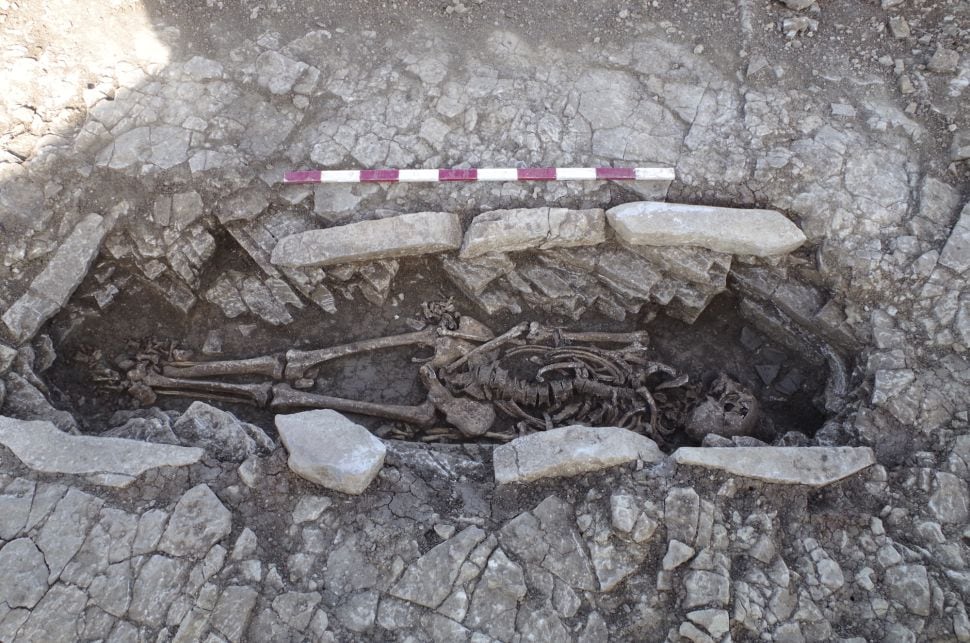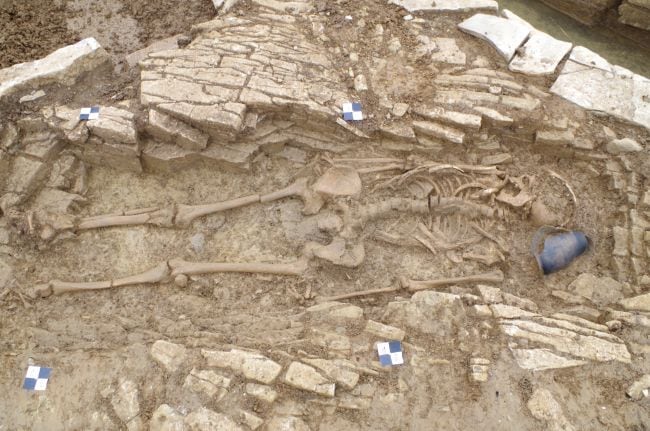Díky za článek. 
50 graves of slaves who worked in the Roman villa
Categories: Finds and rescue research abroad , Nálezy nejenom s detektorem v západní Evropě
Graves dating back to the Roman period have been found by archaeologists in the south of England while they were investigating the site where a new school is planned. The people buried there probably worked as slaves in a villa near the burial site.
The archaeologists discovered a total of fifty graves of slaves who are believed to have worked in a Roman villa nearby. Almost all of them were buried wearing leather shoes because they had tiny nails on their feet. One woman was placed in a grave with her head resting on a pillow, suggesting that she held an elite position in her community.
According to the analyses made so far, they all lived around the fourth century AD. Many of them were buried with various items such as pottery or brooches. The graves were discovered by archaeologists in the county of Somerset, which is located in the south-west of England. "It is very rare to find such a large number of Roman graves in our region. We are certain that all the people buried here worked in a Roman villa," stated historian Steve Membery, who oversaw the archaeological research.
He said they probably performed a variety of work, but were not paid for it. "They served in the household, did all the agricultural work, and managed other activities such as necessary house repairs and the like. The find is an opportunity for us to study how such a community functioned," Membery said.
In terms of burial, the local inhabitants combined practices common in the Iron Age and Roman times. Some of the buried individuals probably had high status in their community. "For example, an elderly woman buried with her head on a pillow in a stone coffin was probably an important person," the historian noted.
The stone-lined coffin and the cooking pot with which the person in question was buried date from the late fourth century. Later research showed that the pot contained bones from chicken wings. "The graves found clearly show that the local inhabitants adopted the Roman way of burial very early on," Membery noted, adding that DNA tests will now follow.
The archaeologists discovered the graves during a survey of the site where a new school is to be built. They had stone bottoms, probably to make them last as long as possible, and some had stone canopies, which is not very common for the area. The pots were at the dead men's heads. In addition, the archaeological team found coins bearing the likeness of the Roman emperor Vespasian, who ruled from 69 to 79 AD. And a carved bone that probably served as a knife handle.



Sources: www.livescience.com, www.theguardian.com
The article is included in categories:
- Archive of articles > Archaeology > Finds and rescue research abroad
- Archive of articles > Archaeology > Finds and rescue research abroad > Nálezy nejenom s detektorem v západní Evropě
Post
zajímavý článek
"Rakev lemovaná kamenem a hrnec na vaření, se kterým byla dotyčná pohřbená, pochází z konce čtvrtého století. Pozdější výzkum ukázal, že nádoba obsahovala kosti z kuřecích křidýlek." Už tenkrát měli otroci rádi KFC!





